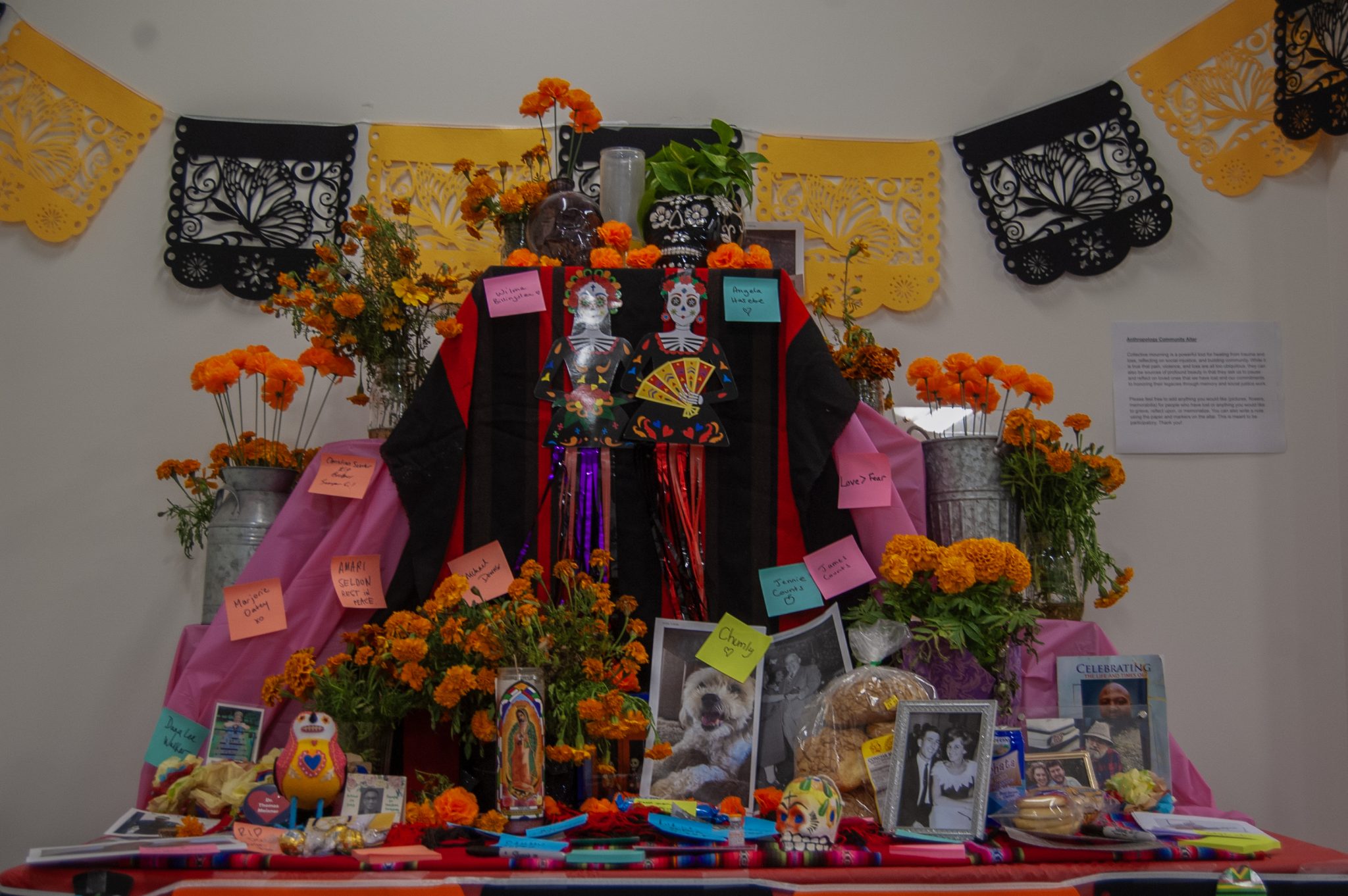Candles, marigolds, pictures, food and sticky notes adorned a table on the second floor of Woods Hall at the University of Maryland last week.
The ofrenda, an altar used to honor dead loved ones for Day of the Dead, is a staple part of the holiday’s celebration. Andrea López, an associate professor in this university’s anthropology department, created the altar in Woods Hall to bring university community members together to mourn and heal from recent trauma and losses.
“An altar can be a nice way to build community and pause in a moment of collective mourning,” López said. “Thinking about collective mourning comes, essentially, as a reflection on our commitments to honoring people that we’ve lost, either familial or in other types of communities.”
Día de los Muertos, or Day of the Dead in English, is typically celebrated on the first two days of November and is one of the most important holidays in various Latin American countries such as Mexico, El Salvador, Ecuador and Bolivia. The holiday honors and remembers loved ones who have died with food, sugar skulls and altars.
López sent an email to students, staff and faculty in the anthropology department on Oct. 30, encouraging them to leave pictures, flowers or memorabilia to honor people they have lost or other things they want to memorialize.
[UMD Arab students celebrate community at cultural night]
López also wanted to encourage people unfamiliar with the holiday to participate. She left sticky notes with Sharpies on the altar for people who wanted to leave a name or message to make the altar “more accessible,” she said.
Joanna Wahmhoff, a senior anthropology and criminology and criminal justice major, has never celebrated Day of the Dead before and wasn’t familiar with the holiday. Wahmhoff visited the altar Wednesday afternoon after receiving López’s email.
Wahmhoff left a picture of her late childhood dog, Chumly, on the altar. The altar provided an opportunity to honor something that was important to her while fostering a community connection, she said.
“Participating in the grieving process communally is a very human thing to do and it creates connections to other people, even if you haven’t met,” Wahmhoff said. “I have a connection with these people because we’ve all experienced loss in some way or form.”
For anthropology department chair Barnet Pavão-Zuckerman, the altar has been a “huge hit” and a beautiful addition to the department’s space.
She left pictures of her mother and stepfather, who both died in 2015, and buttons made by students of one of her late colleagues at the University of Arizona.
[UMD Dining Services hopes to promote cultural education with more diverse cuisines]
“It has been very healing,” Pavão-Zuckerman said. “The ofrenda can be a reminder of that beautiful thing that is life, and the beautiful thing that it is to mourn.”
Since it was built on Tuesday, Pavão-Zuckerman has noticed new faces and new additions to the altar.
“It’s sort of grown organically,” Pavão-Zuckerman said. “Every time we walk by, something’s been added and it’s really this shared story. It’s very moving.”
The altar will stay for a week — beyond the standard number of days used to celebrate Day of the Dead — to provide community members time to reflect on various memorializations, López’s email said.
Emiliano Campos, a graduate student studying anthropology, said having the altar up for longer than the standard two-day celebration makes it easier for graduate students, faculty and others who may not be on campus every day to engage with it, he said.
While this is the first year López has created an altar, many hope the department will continue the tradition in the future.
“I think we’re going to be doing this for a long time,” Pavão-Zuckerman said. “People stop and pause, and they look at the pictures and the names and I think it’s a beautiful thing.”



